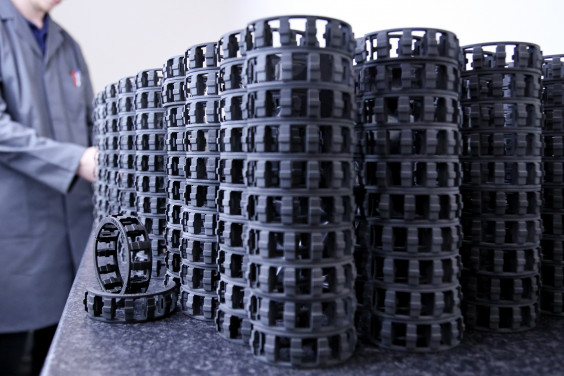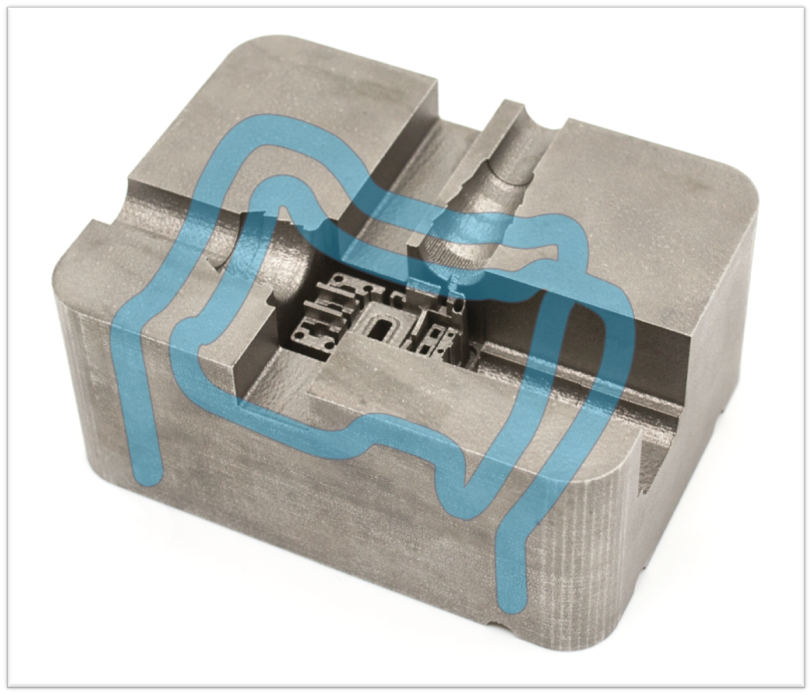SmarTech has published its latest report, Market Opportunities for Additive Manufacturing in the General Industry and Tooling Sector 2020-2029, which will add a great deal of clarity to some of the stories we’ve recently covered related to the adoption of 3D printing in the general industry and tooling sector. One of the most important insights elucidated by the report is the fact that AM for the general industry and tooling sector is expected to result in $5.48 billion in total revenue by 2029.
While we’ve been able to capture some snapshots of this segment through our news coverage, the report breaks the information down in greater detail and relies on interviews, secondary sources, a large database of industry-specific information to generate projections over the course of the next ten years. Ten-year forecasts have been developed for each AM segment (hardware, materials, and services), which are further segmented based on hardware technologies, material types and service types. Segment revenues ($ Millions) and volume (units or kilograms/tons shipped) are also included.
Numerous companies are finding unique ways to introduce additive manufacturing (AM) to their niche sectors. In the case of roller bearings, Bowman International has demonstrated significant performance improvements through the use of HP’s Multi Jet Fusion, while Next Chapter Manufacturing is redesigning tools for injection molding in ways that suggest an upcoming revolution in the design and production of molds and dies that involves conformal cooling, topology optimization, and repairs and upgrades using 3D printed inserts.
These specific examples are part of a larger trend in the general industry and tooling market in which industrial manufacturers are looking to digitize their supply chains. As we’ve come to see in AM, manufacturers are turning to automation and digitization, of which 3D printing plays a key role. AM adoption in the sector is already well developed and companies are following a pattern we regularly see throughout various industrial sectors: first prototyping, then tooling, then the use of AM for production parts.
Within this larger picture, a number of other trends are occurring related to specific sub-segments, including polymer and metal AM hardware, materials and services. For instance, by 2029, total AM hardware sales are expected to generate $1.6 billion annually.
Polymer AM’s place in general industry and tooling is firmly fixed, largely in part due to the fact that it is already used to perform prototyping and to 3D print jigs and fixtures. The emergence of lower-cost, higher temperature extrusion systems that can print high-performance plastics will see the segment growth even more, as will the adoption of continuous digital light processing systems and high-throughput polymer powder bed fusion technologies. Polymer extrusion systems, in particular, are expected to generate $722 million by 2029.
Metal AM hardware will also be key, due to its use in the production of molds and, as adoption increases and the technology improves, end parts. Metal powder bed fusion (PBF) technologies represent the largest opportunity for metal AM hardware at $557 million annually by 2029, due to the cost of the technology.
The report also details the AM strategies and positions of a large number of companies in the space. This includes AM hardware, such as Carbon, EOS, HP, Xaar, GE Additive, Additive Industries, Desktop Metal and Markforged, as well as service providers and materials companies, like Siemens, Sandvik, Parmatech, Kennametal, Phoenix Contact, GKN Additive and SMS Group. Also obviously crucial are general industry and tooling companies, which include but are not limited to Mapal, Guhring UK,, Kueppers Solutions, CNH Industrial, Cummins Inc., Wabtec, Emerson Electric, Xylem, Caterpillar, Volvo Construction Equipment.
This is the first report of its kind to fully illustrate the adoption of AM in the general industry and tooling sector, providing key information about how the technology is being used and data-driven analysis of where the sector is headed. To learn more, visit the report page.
Subscribe to Our Email Newsletter
Stay up-to-date on all the latest news from the 3D printing industry and receive information and offers from third party vendors.
Print Services
Upload your 3D Models and get them printed quickly and efficiently.
You May Also Like
Johns Hopkins University Researchers Develop HyFAM Technology
Two scientists from Johns Hopkins University, Nathan C. Brown and Jochen Mueller, have developed a hybrid manufacturing technology they call HyFam, or Hybrid Formative Additive Manufacturing. Their work on this technology...
3D Printing G-Code Gets an Upgrade: T-Code
Good old G-Code still manages many 3D printers, great and small. Just like the STL, it’s a standard that enables collaboration while also holding the additive manufacturing (AM) industry back....
AM Rewind: The Biggest News and Trends of 2024
After a sluggish 2023, driven by persistent inflation and geopolitical tensions, 2024 has seen some recovery. Economic growth climbed from about 2.8 percent in 2023 to a modest 3.2 percent...
Metal Wire 3D Printer OEM ValCUN Announces Plans for 2025 Expansion
ValCUN, a Belgian original equipment manufacturer (OEM) of wire-based metal additive manufacturing (AM) hardware, has announced that the company has entered the next phase of its growth trajectory, making key...




































